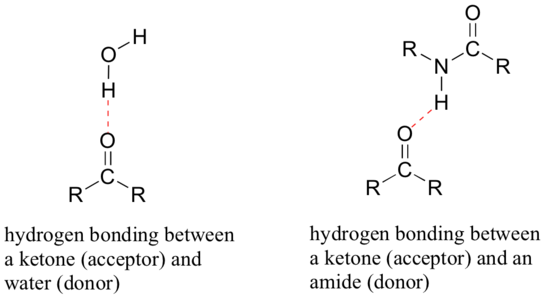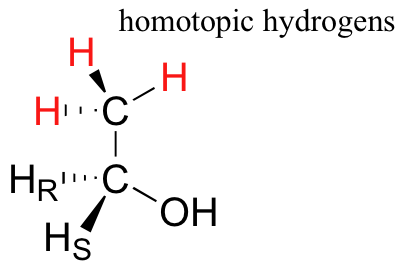Uncertainties in Measurements
All
measurements have a degree of uncertainty regardless of precision and
accuracy. This is caused by two factors, the limitation of the measuring
instrument (systematic error) and the skill of the experimenter making
the measurements (random error).
1. Introduction
2. Systematic and Random Error
3. Calculating Error
4. Methods of Reducing Error
5. Outside links
6. References
7. Problems
8. Solutions
2. Systematic and Random Error
3. Calculating Error
4. Methods of Reducing Error
5. Outside links
6. References
7. Problems
8. Solutions
Introduction
As the illustration below demonstrates:
(If you look at the slight curve the meniscus makes, the lowest part is where you actually record)
The graduated cylinder in the picture
contains a certain amount of water to be measured. The amount of water
is somewhere between 40ml and 50ml according to the marked lines. By
checking to see where the botton of the meniscus lies, referencing the
ten smaller lines, the amount of water lies between 44ml and 45ml. The
next step is to estimate the uncertainty between 44ml and 45ml. Making
an approximate guess, the level is less than 44.5 ml but greater than
44.0 ml. We then report that the measured amount is approximately
44.1ml. The graduated cylinder itself may be distorted such that the
graduation marks contain inaccuracies providing readings slightly
different from the actual volume of liquid present.
Systematic and Random Error
When we use tools meant for measurement,
we assume that they are correct and accurate, however measuring tools
are not always right. In fact, they have errors that naturally occur
called systematic errors. An example of a systematic error is a weighing scale. There are two specific types of systematic errors:
- Offset or Zero setting errors: When the measuring tools cannot read zero while the quantity measure is zero.
- Multiplier or Scale Factor Error: When the measuring tools consistently give readings to changes that are greater or smaller than the actual change.
Random error: Sometimes
called human error, random error is determined by the experimenter's
skill or ability to perform the experiment and read scientific
measurements. These errors are random since the results yielded may be
too high or low. Often random error determines the precision of the
experiment or limits the precision. For example, if we were to time a
revolution of a steadily rotating turnable, the random error would be
the reaction time. Our reaction time would vary due to a delay in
starting (an underestimate of the actual result) or a delay in stopping
(an overestimate of the actual result).
Random vs Systematic Errors
In this experiment a series of shots is
fired at a target. Random errors are caused by anything that makes the
shots inconsistent and arrive at the target at random different points.
For example, the shooter has an unsteady hand or a change in the
environment may distort the shooter's view. These errors would result in
the scattering of shots shown by the right target in the figures to the
left. A systematic error, on the other hand, would include consistent
errors that always arise. For example, the gun may be misaligned or
there may be some other type of technical problem with the gun. This
type of error would yield a pattern similar to the left target with
shots deviating roughly the same amount from the center area.

When measuring a defined length with a
ruler, there is a source of uncertainty and the measurement may need
estimation or rounding between two points. When doing this estimation,
it is possible to over estimate and under estimate the measured value,
meaning there is a possibility for random error. Also, the ruler itself
may be too short or too long causing a systematic error. For example,
the illustration to the right shows a pencil whose length lies between
25cm and 26cm. With an intermediate mark, the ruler shows in greater
detail that the pencil length lies somewhere between 25.5cm and 26cm.
Therefore, one may reasonably approximate that the length of the pencil
is 25.7cm. The presence of a systematic error, however, would likely be
more subtle than a random error because the environment may affect the
ruler in a difficult to notice way or the ruler itself may have slightly
inaccurate markers.
Precision vs. Accuracy
Precision is often
referred to as reproducibility or repeatability. For example, consider
the precision with which the golf balls are shot in the figures below. A
set of shots that are only precise would mean you are able to cluster
your shots near each other on the green but you are not reaching your
goal, which would be to get the golf balls into the hole. This concept
is illustrated in the left picture of the two figures below. Accuracy,
on the other hand, is how close a value is to the true or accepted
value. The picture to the right demonstrates accuracy showing that the
balls all get into the hypothetically large hole but are all at
different corners of the hole. Therefore, the shots are not precise
since they are relatively spread out but they are accurate because they
all reached the hole. To sum up this concept, accuracy is the ability to
hit the desired target area or measured value while precision is the
agreement of shots or measured values with each other but not with the
intended target or value.
Calculating Error
Since equipment used in an experiment
can only report a measured value with a certain degree of accuracy,
calculating the extent to which a measurement deviates from the value
accepted by the scientific community is often helpful in gauging the
accuracy of equipment. Such a calculation is referred to as the percent error of a measurement and is represented by the following formula:
Percent Error = [(Experimental Result - Accepted value) / Accepted Value] X 100%
Consider this real world example to
understand the role of percent error calculations in determining the
accuracy of measuring equipment: A toy company that ships its products
around the world must calculate fuel costs associated with transporting
the weight of their standard 2 by 3 foot box. To predict shipping costs
and create a reasonable budget, the company must obtain accurate mass
measurements of their boxes. The accepted mass of a standard box is
0.525 kg. The company measures a sample of three dozen boxes with a
sophisticated electronic scale and an analog scale each yielding an
average mass of 0.531 kg and 0.49 kg, respectively. A calculation of
percent error for each device yields the following results:
Percent Error of Electronic Scale = [(0.531kg - 0.525kg) / 0.525kg] X 100% = 1.14 %
Percent Error of Analog Scale = [(0.49kg - 0.525kg) / 0.525kg] X100% = -6.67%
Immediately, one notices that the
electronic scale yields a far more accurate measurement with a percent
error almost six times lower than the measurement obtained from the
analog scale. Also note that percent error may take on a negative value
as illustrated by the calculation for the analog scale. This simply
indicates that the measured average lies 6.67% below the accepted value. Conversely, a positive percent error indicates that the measured average is higher than the accepted value.
Methods of Reducing Error
While inaccuracies in measurement may
arise from the systematic error of equipment or random error of the
experimenter, there are methods that can be employed to reduce error:
Weighing by difference: Mass
is an important measurement in many experiments and it is critical for
labs to reduce error in mass measurements whenever possible. A simple
way of reducing the systematic error of electronic balances commonly
found in labs is to weigh masses by difference. This procedure entails
the following:
1) finding the mass of both the desired material and the container holding the material,
2) transferring an approximate amount of the material to another container,
3) remeasuring the mass of the original container, and
4) calculating the mass
of the removed sample by taking the difference between the initial and
final weights of the original container. The following formula
illustrates the procedure used for weighing by difference:
(mass of container + mass of material) -
(mass of container + mass of material after removing material) = mass
of removed material
While most electronic balances have a "tare" or "zero" function that
allows one to automatically calculate a mass by difference, equipment
can be faulty so it is important to remember the fundamental logic
behind weighing by difference.
Averaging Results:
Since the accuracy of measurements are limited in part to the capacity
of an experimenter to interpret their equipment, it makes sense that the
average of several trials would be taken rather than a single trial.
The reasoning behind averaging results is that an error of a measured
value that falls below the actual value may be accounted for by
averaging with an error that is above the actual value. By performing a
series of trials (the more trials the more accurate the averaged
result), an experimenter can account for some of their random error and
yield a measurement with higher accuracy.
Calibrating Equipment:
Just as random error can be reduced by averaging several trials,
systematic error of equipment can be reduced by calibrating a measuring
device. This usually entails comparing a standard device of well known
accuracy to the second device requiring calibration. Additionally,
procedures exist for different kinds of equipment that can reduce the
systematic error of the device. For example, a typical buret in a lab
may be used to carry out a titration involving neutralization of an acid
and base. If the buret formerly held acid but must now hold a base,
then it would benefit the experimenter to condition the buret
with the base before carrying out the titration so that the buret may
acclimate to the new substance and provide a more accurate reading. Such
procedures, together with calibration, can reduce the systematic error
of a device.
No comments:
Post a Comment